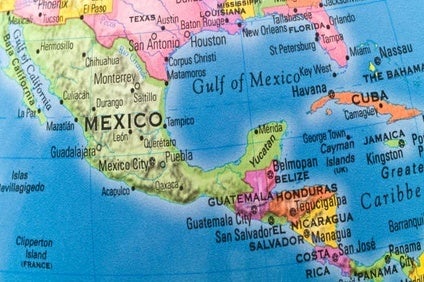
The Central America – Dominican Republic Apparel and Textile Council (CECATEC-RD) noted that new opportunities to bring jobs and prosperity to the CAFTA-DR Region have emerged due to changes in global supply chains, the effects of the pandemic on different textile and apparel producers, and the interest of many brands and retailers to source near to the US market.
After two years of negotiations, the US signed the implementation legislation for CAFTA on 2 August 2005, followed by El Salvador, Honduras, Nicaragua, and Guatemala in 2006, the Dominican Republic in 2007, and Costa Rica in 2009. Since the Dominican Republic joined, it has been called the Dominican Republic-Central America Free Trade Agreement (CAFTA–DR).
At a meeting with private sector associations from the textile and apparel industries, CECATEC-RD highlighted changes in consumer behaviour and the increased use of e-commerce which are bringing forth new opportunities for the apparel and textile supply chain.
The Council says it recognises the importance of increasing capacity by promoting greater foreign direct investment to the region, complementing recent increases in local investment. It also stresses the importance of maintaining the rules of the game under the CAFTA-DR Agreement, including the “yarn forward” rule of origin, which serves as the backbone that holds together the US-CAFTA-DR textile and apparel supply chain.
The investment in recent years has been based on that premise – and there is substantial programmed private investment currently in the pipeline geared towards more verticalization of the supply chain and higher value added products. This trend risks being reversed- affecting the creation of badly needed jobs – if there is a change in the rules.
“Our industry is poised to play a key role in achieving investment-led growth and employment generation in our countries. However, any changes to the Agreement could greatly harm it, as well as the prospect for the region´s post-pandemic recovery thus undermining the work we have been doing over the years, which has helped bring social and economic development to our countries,” said Daniel Facusse, president of CECATEC.

US Tariffs are shifting - will you react or anticipate?
Don’t let policy changes catch you off guard. Stay proactive with real-time data and expert analysis.
By GlobalDataThe private sector associations expressed that the agreement has important provisions, such as the short supply mechanism, which give the necessary flexibility for those needing to source materials not available in the region and would be open to review this mechanism to ensure it stays transparent, efficient and responsive to the needs of the supply chain.
Just Style’s 4 key US apparel import trends to watch in 2021 explores why CAFTA-DR apparel makers have struggled to secure and grow business during the pandemic-era despite talks of near-sourcing.



